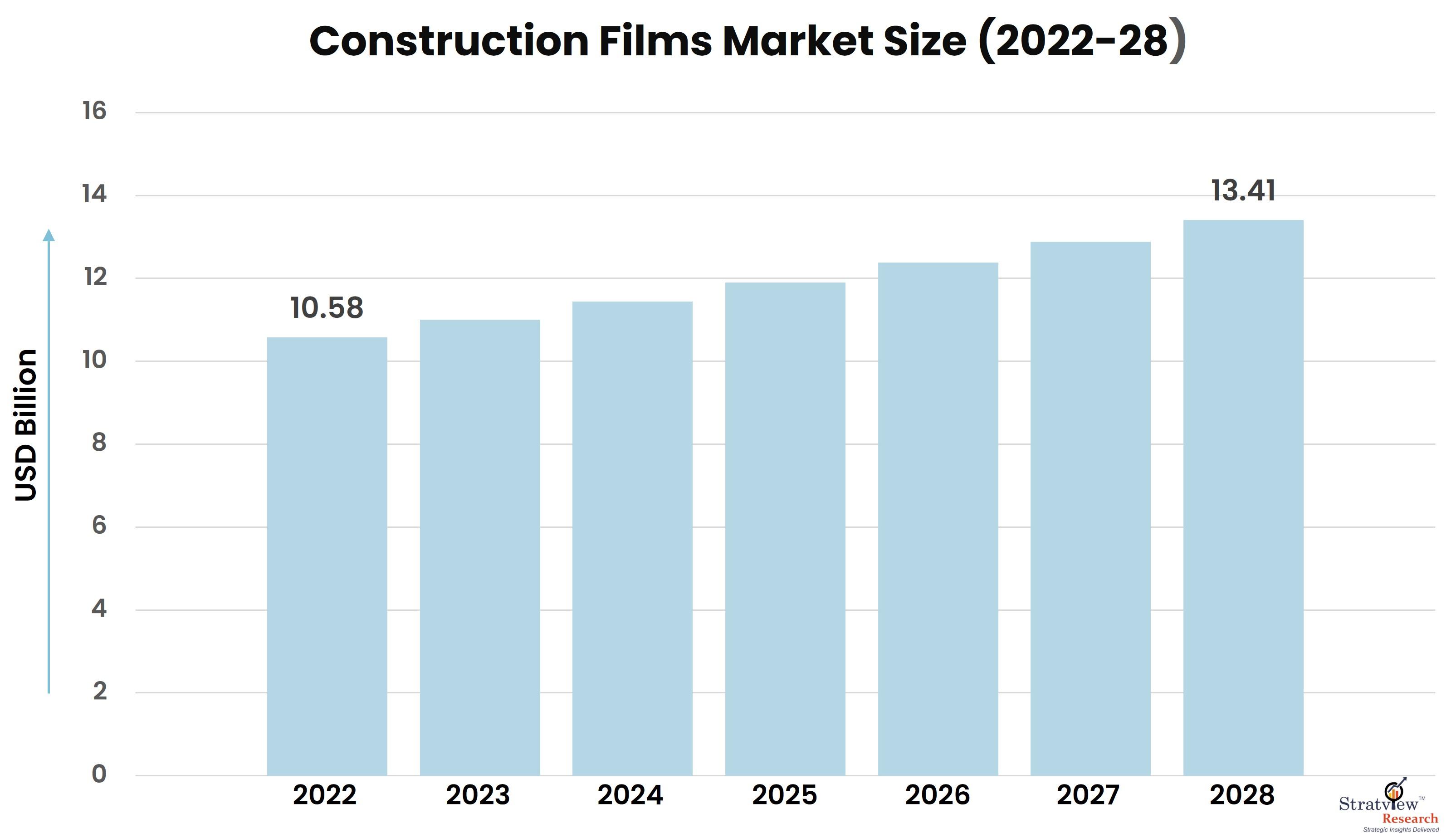According to Stratview Research, the construction films market was estimated at USD 10.58 billion in 2022 and is likely to grow at a CAGR of 4.02% during 2023-2028 to reach USD 13.41 billion in 2028.
In the dynamic realm of construction, innovation takes many forms, and one such integral component is the Construction Films Market. These transparent marvels play a crucial role in modern construction practices, offering a range of functionalities that go beyond mere coverings. This article delves into the clear vision provided by the Construction Films Market, unraveling insights into the trends, materials, and applications that shape this essential sector.
Evolution of Construction Films: The Construction Films Market has witnessed a remarkable evolution over the years. From basic protective covers to advanced, multi-functional films, these materials have become indispensable in various construction applications.
Material Advancements: The choice of materials in construction films has expanded, with a focus on durability, flexibility, and sustainability. Polyethylene, polypropylene, and PVC films are among the materials leading the charge, providing robust solutions for diverse construction needs.
Weathering the Elements: One of the primary functions of construction films is to shield construction sites from the unpredictable elements. UV-resistant films, weatherproof covers, and reinforced materials contribute to enhanced protection against rain, wind, and sunlight.
Versatility in Applications: Construction films are versatile in their applications, serving various purposes on construction sites. From temporary enclosures and scaffolding covers to moisture barriers and concrete curing blankets, these films play a crucial role in maintaining optimal conditions during construction.
Sustainable Solutions: Sustainability is a key driver in the Construction Films Market. Manufacturers are increasingly focused on developing eco-friendly films with minimal environmental impact, aligning with the construction industry's growing commitment to green practices.
Thermal Insulation Films: As energy efficiency becomes a priority in construction, thermal insulation films have gained prominence. These films help regulate temperature, reducing the need for additional heating or cooling systems and contributing to energy savings.
Clear Safety Measures: Construction films also serve safety purposes, providing a transparent barrier that enhances visibility while safeguarding workers and the surrounding environment. Clearly marked films can delineate hazardous zones and ensure compliance with safety protocols.
Aesthetic Considerations: Beyond functionality, construction films are increasingly recognized for their aesthetic contributions. Transparent films that allow natural light into construction spaces contribute to a brighter, more comfortable working environment.
Technological Integration: The Construction Films Market is embracing technological advancements. Smart films with embedded sensors for monitoring temperature, humidity, and structural integrity are paving the way for data-driven construction practices.
Resilience in Extreme Conditions: Construction sites often face extreme conditions, and construction films are engineered to withstand these challenges. Whether it's extreme temperatures, high winds, or heavy rain, these films offer resilience, ensuring continuous protection.
Regulatory Compliance: With stringent regulations governing construction practices, construction films are designed to comply with industry standards. Fire-resistant films, for example, play a critical role in meeting safety regulations on construction sites.
Customization and Prefabrication: The Construction Films Market is witnessing a trend towards customization and prefabrication. Tailored films that align with specific project requirements and pre-manufactured solutions contribute to time and cost savings.
Global Market Trends: Construction films are part of a global market influenced by regional construction trends. Understanding these global dynamics helps industry stakeholders adapt to market variations and cater to diverse construction needs.
Innovation in Adhesive Technologies: Adhesive technologies used in construction films are continually evolving. The development of high-performance adhesives enhances the durability and longevity of films, ensuring they remain securely in place for the duration of construction projects.
Future Perspectives: As construction practices continue to evolve, the Construction Films Market is poised for further growth. From incorporating smart technologies to expanding sustainable practices, the future holds exciting possibilities for clear visionaries in the construction industry.
Conclusion:
The Construction Films Market stands as a transparent enabler of progress in the construction sector. From protecting construction sites to enhancing safety, sustainability, and aesthetics, these films are essential components in the modern builder's toolkit. As the industry continues to advance, a clear vision into the trends and innovations within the Construction Films Market becomes paramount, guiding construction professionals towards efficient, sustainable, and visionary practices.
